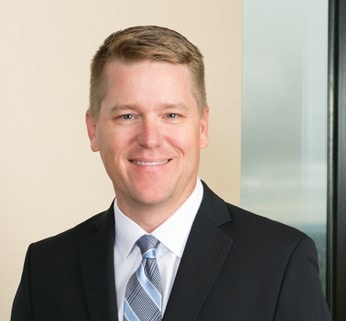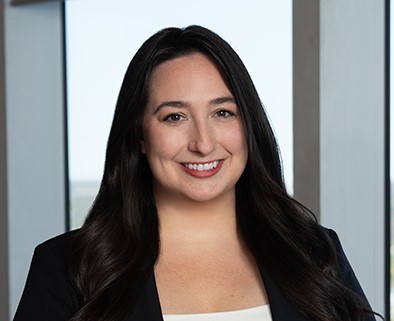August 4, 2025
Progress Isn’t Perfect: Emerging Professional and Technological Risks Facing Contractors and Design Professionals

A perfect storm of labor shortages, material volatility, economic uncertainty, and accelerating adoption of advanced technologies in the construction industry is reshaping project delivery and, with it, the liability profile of contractors. Errors & Omissions (E&O) coverage—once viewed as optional, or necessary only for design professionals—is becoming an essential component of a contractor’s risk-transfer program. For the insurance claims professional, this evolution presents new questions of coverage, allocation, and defense strategy that must be answered against a rapidly shifting factual and legal backdrop.
This article synthesizes recent developments in professional and technological exposures confronting contractors, highlights the significant legal issues that flow from those developments, and offers practical guidance for underwriting and claims handling. While the discussion is grounded in U.S. law, many observations have broader relevance given the global diffusion of construction technologies and delivery models.
The Expanding Risk Landscape
A significant percentage of the U.S. construction workforce is nearing retirement, and projections signal a major and widening shortfall in coming years. A thinner, less-experienced labor force increases the likelihood of schedule slippage, cost overruns, and safety incidents—which can precipitate negligence allegations against the general contractor (GC) for failure to supervise or provide adequate manpower.
Supply chain disruptions persist, including material scarcity and inflated material pricing, forcing contractors to re-sequence work, substitute materials, and negotiate change orders mid-stream. These heighten the potential for defective work claims and spur contractors to deploy software solutions for real-time procurement and budgeting, introducing an overlay of technology-related risk.
A work-from-home culture has cooled demand for traditional office builds, and contractors following their clients into specialized sectors may confront unfamiliar standards of care, novel equipment, new project delivery methods, and compressed timelines—all fertile ground for professional liability exposure.
To keep pace, the construction industry, like others, has adopted technological advances, but with every step forward comes pitfalls. While building information modeling (BIM), AI-assisted design, drones, construction robots, wearables, and IoT sensors promise efficiency, precision, and safety, they may introduce cyber and data-breach vulnerability; automated design errors with downstream impact; intellectual property infringement claims from AI-generated content; property damage and bodily injury claims from hardware malfunctions; and questions of causation and fault allocation among software vendors, design professionals, and contractors.
Professional Liability Exposure to Contractors
Courts recognize that contractors, by virtue of their specialized expertise and compensated role, owe a duty of care to foreseeable third parties—even where they neither procured nor officially endorsed the design. Common allegations include negligent construction management, negligent value-engineering or constructability reviews that compromise performance, and inadequate oversight and/or supervision of professional subconsultants or inspectors.
For design-build entities, the risk multiplies. Even if design services are subcontracted to a licensed architect or engineer, the design-builder (e.g., GC) remains contractually or vicariously liable for professional errors. If the design subconsultant becomes insolvent or its claims-made policy is exhausted, the design-builder stands alone to answer the claim.
Defining “Professional Services” in the Policy: The Coverage Gatekeeper
The definition and scope of “professional services” within an E&O policy is key. Some policy forms enumerate covered services while others permit the insured to share in defining professional services in the policy endorsement.
Key considerations include:
- Breadth and specificity—a narrow definition may omit emerging activities such as BIM coordination, drone-based inspections, or pre-fabrication design assist.
- Endorsement precision—contractors must supply an exhaustive list of services; omissions create gaps.
- Overlap with Commercial General Liability (CGL) policies—most CGL policies exclude professional services outright.
- Claims professionals should confirm whether allegations fall solely within the E&O policy or straddle both policies, affecting defense cost allocation.
Technology-Driven Exposures
With regard to software, BIM and cloud collaboration tools have dramatically revised drawings and design. A single erroneous data entry can run through the model, producing latent defects. Software outages or cyberattacks can stop a project, resulting in significant delay claims. The issue becomes the root cause of a professional error, a cyber event, or both and which policy should respond. Other frequently used technology includes the following.
Drones
Used for survey, mapping, and façade inspection, drones raise concerns of crash damage, privacy invasion, and incorrect data capture. Many E&O policies now expressly exclude unmanned aircraft operations unless endorsed. CGL forms may provide bodily injury or property damage coverage but not remediation of faulty data.
Construction Robots and 3D Printing
Autonomous bricklaying, robotic-welding, and on-site 3D printed structures compress schedules and potentially lower cost. If a robot misaligns due to defective programming, is the resulting failure a covered “occurrence” under the CGL, a professional error under the E&O, or a product defect excluded from both? Claims handlers must parse policy language and causation theories early.
Wearables and IoT Sensors
From concrete maturity monitors to GPS-enabled safety vests, sensors generate vast data. Inaccurate readings may cause structural failure, and data breaches implicate privacy statutes. The intersection of property damage, negligence, and cyber liability requires coordinated claim management across multiple towers of coverage.
Contractual Risk Transfer and Anti-Indemnity Limitations
Contractors often rely on hold harmless provisions, yet these generally are strictly construed by courts, written poorly without recognition of jurisdictional restrictions on such clauses, and not tailored to individual projects and the parties contracting.
In addition to the uphill battle of enforcing a hold harmless clause, contracting parties frequently do not understand what coverage is actually being afforded:
- They may not understand the nuances of E&O policies, builders’ risk policies, general liability policies, and other requisite coverages for a construction project.
- If they rely on contractual promises alone, the result is often inadequate coverage and increased risk exposure. The actual policy language may not honor contractual indemnity obligations.
- They may not realize professional indemnity policies are typically claims-made, and if the consultant retires or allows coverage to lapse, the contractor’s tender will fail.
Statutorily, contractors and design professionals must be wary of anti-indemnity statutes, which have been adopted by multiple jurisdictions and limit or bar altogether contractual clauses. Accordingly, sophisticated contractors must secure their own E&O coverage rather than rely solely on downstream indemnity or additional-insured status (where it may not be afforded).
Coverage and Claims-Handling Implications and Best Practices
There are some takeaways that can assist in navigating the path to effective resolution:
- Early Triage of Allegations. Determine whether claims sound in faulty workmanship (CGL), professional negligence (E&O), or technology-failure/cyber (stand-alone cyber or tech E&O).
- Concurrent Defense and Allocation. When multiple policies potentially apply, joint defense protocols and cost-sharing agreements reduce friction and preserve insurer relationships.
- Expert Selection. Cases involving BIM, robots, or IoT data demand experts fluent in software architecture, coding, and data forensics, in addition to traditional construction disciplines.
- Preservation of Digital Evidence. Drone footage, BIM revision histories, and sensor data logs are ephemeral. Claims professionals should issue litigation holds and coordinate with insureds to preserve metadata.
- Reinsurance Notice. High-severity technological claims can erode limits quickly. Prompt notice to reinsurers is imperative.
Practical Recommendations
With modernization and fast-paced change in construction comes greater and different risks. Our recommendations to manage that risk herein are not exhaustive but highlight essential recommended actions:
- Contractors should work closely with brokers and legal counsel to conduct regular, comprehensive reviews of professional and tech-related activities required in the scope of work as compared with actual work being conducted on each project.
- Policy language should align with contractual obligations and professional services defined accordingly.
- All contract documents should be project-specific, regularly reviewed, and require adequate proof of current coverages from all subcontractors and subconsultants, including professional liability coverage, and require right-of-review policy forms to confirm proper coverages.
- Lastly, contractors should maintain parallel cyber coverage to capture data breaches and network interruption.
In addition:
- Insurers and claims professionals should regularly (1) update underwriting questionnaires to penetrate the insured’s technology level and data-governance protocols and (2) draft technology endorsements clearly delineating coverage intent and exclusions.
- Claims professionals should be trained to recognize emerging technologies and associated risks to be able to quickly and effectively mitigate risk and ensure accurate liability assessment and reserve setting.
- Defense counsel for contractors engaging in professional services and design professionals should:
- Work with clients, brokers, and insurers to formulate risk management training that keeps pace with emerging technological exposures.
- Be aware of the evolving standard of care applicable to contractors’ professional and technological functions on projects.
- Anticipate challenges to novel expert methodologies relying on AI or algorithmic reconstruction of events.
- Most importantly, continue to review, counsel, and draft contract documents that harmonize project delivery method and scope of work of the client with indemnity, insurance, and technology licensing provisions, which, to the extent possible, fully protect the interests of contractor and design professional clients.
Conclusion
The convergence of professional services and cutting-edge technology has irreversibly altered the contractor’s risk profile and, by extension, the insurance products and claims strategies required to address it. E&O coverage—properly structured and carefully managed—creates an effective risk-transfer strategy and provides for adequate coverage on a protect. Claims professionals who understand the risks, take proactive steps to effectively transfer risk, and keep up with technological innovation will be best positioned to evaluate exposure, control loss costs, and deliver superior outcomes for their insureds.
Meet the Authors

Wendy D. Testa, Cochair, Design Professionals Practice, Philadelphia, PA
Wendy Testa is a partner and cochair of Wilson Elser’s national Complex Tort & General Casualty and Design Professional practices. She focuses her legal practice on risk management services, and defense and insurance coverage litigation in the areas of professional liability, including architects/engineers as well as other construction professionals; real estate and insurance brokers/agents; construction/construction defect liability; product liability; and contract drafting, negotiating and risk transfer disputes on behalf of developers and contractors. Wendy handles defense and coverage matters for the U.S. and London insurance markets. Her understanding of these markets and varied underwriting practices as well as her experience in drafting and interpreting policy language contributes to her effectiveness with coverage analysis and as a litigator in her areas of practice.
In addition, Wendy has a breadth of real estate E&O defense experience managing and resolving claims on behalf of large national property management and brokerage firms as well as litigating disputes throughout the United States on behalf of real estate brokers, appraisers, title abstractors, home inspectors, insurance brokers, managing agents and broker-dealers. In addition to efficiently managing claims, she assists our real estate professionals in licensing and regulatory matters as well as navigating complex contractual issues, leases and agency agreements; performing due diligence related to acquisitions; helping to ensure fair housing and other applicable statutory and/or local code and regulatory compliance. Wendy’s experience in the insurance and real estate industries results in spot-on analysis of liability and exposure and effective resolution strategies.
First and foremost, Wendy is an aggressive advocate for her clients. She develops strong client relationships through trust, responsiveness, reliability and attention to detail. From inception to the successful conclusion of a case, her skills, experience and focus are all directed toward achieving a cost-effective resolution strategy in anticipation of her clients’ needs. Wendy is an efficient and effective litigator as a result of her responsiveness and attention to detail and the key issues of each case.
 Ryan A. Williams, Cochair, Design Professionals Practice, Denver, CO
Ryan A. Williams, Cochair, Design Professionals Practice, Denver, CO
Ryan Williams represents clients in complex premises liability and high-exposure general liability cases, construction defect matters, trucking and transportation matters, professional liability on behalf of architects and engineers, and nursing home and elder law matters. In addition, Ryan handles real estate litigation; commercial disputes in federal and state courts; and employment litigation, representing employers in cases arising under state and federal fair employment practices statutes. He has prevailed in numerous jury and court trials, and has extensive appellate experience before the Colorado Court of Appeals and Colorado Supreme Court. This wide-ranging experience enables Ryan to effectively represent clients at all stages of litigation. He partners with national and regional insurers to achieve effective defense strategies and resolution of claims in these areas.
Ryan clerked for the Honorable JoAnn L. Vogt of the Colorado Court of Appeals, where he researched and wrote on a broad range of legal topics, including commercial and real estate disputes, insurance law, and corporate, shareholder and fiduciary responsibilities. He then moved to a prominent Denver business firm, where he specialized in construction and real estate litigation. The son of a contractor, Ryan understands the unique needs of construction professionals and the legal issues they and their insurers face.

Casie A. Salvadore, Associate, Philadelphia, PA
Casie Salvadore represents businesses and individuals in all aspects of civil litigation. Her practice focuses on the defense of claims involving general liability, professional liability, product liability, construction defect and accident, premises liability, and transportation/trucking liability. Casie’s experience includes handling insurance coverage disputes, as well as drafting and reviewing contracts.
Casie began her career at Wilson Elser as a law clerk in the Philadelphia office during law school. Previously, as a law student, Casie honed her research and writing skills as a property law research assistant, represented clients as a student attorney in the Clinic for Asylum, Refugee & Emigrant Services, and received the law school’s Dorothy Day Award in recognition of her outstanding achievement in pro bono service. Her interest in pursuing a legal career was piqued prior to law school, working as a legal assistant in the civil litigation unit at the Wisconsin Department of Justice.
News Type
PLUS Blog
Business Line
Professional Liability
Contribute to
PLUS Blog
Contribute your thoughts to the PLUS Membership consisting of 45,000+ Professional Liability Practitioners.
Related Podcasts

The Employment Law Counselor Episode 22
Navigating Labor and Employment Challenges During the Holiday Season Happy Holidays from…
Related Articles

A Softening Cyber Market That Can’t Last and Why Today’s Conditions Set the Stage for Tomorrow’s Correction
On the surface, the cyber insurance market looks like a buyer’s market:…

Claims Made Bites: How Pollution Claims Got Us Here
In this recent case an insured learned the hard way the prohibitive…

Semantics and Sophistry of “For”
Cyberattacks are continuing to increase in both volume and sophistication. This is…
